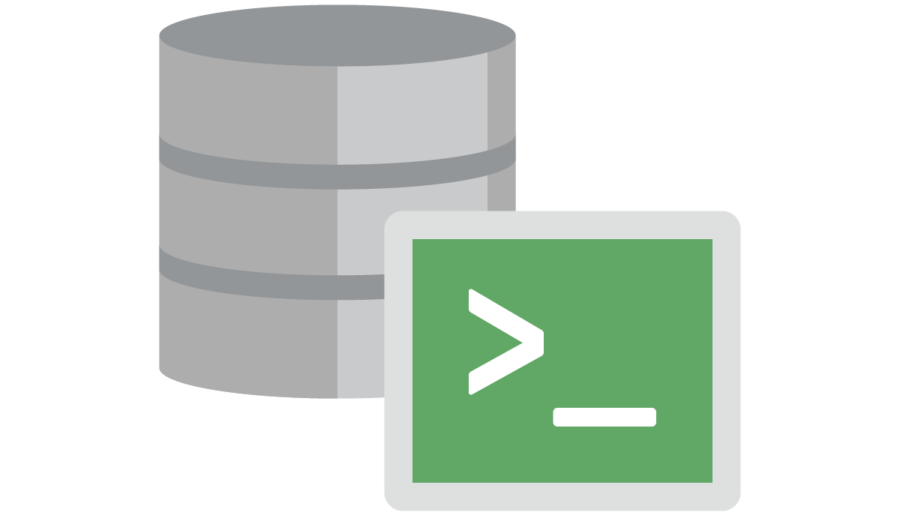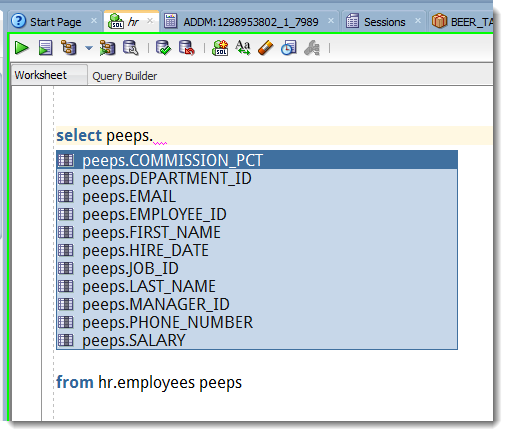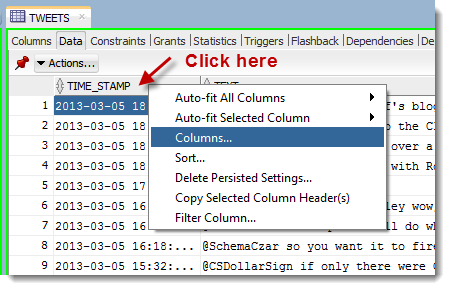One of our bigger new features for version 4 is our new support for the Database Diagnostic Pack. We have a new interface for your ASH, AWR, ADDM reports, and snapshots, baselines, etc. I want to show you a quick navigation trick today: how to quickly go from snapshots with findings to the actual ADDM findings report. On the DBA tree, click on the Snapshots node. Don’t expand the node, click on the top level…
The name probably gives it away, but just in case you weren’t aware of this, Oracle SQL Developer Data Modeler is an extension of Oracle SQL Developer. They share a framework that is derived from JDeveloper. The latest framework has some new user interface widgets that were adopted directly from Netbeans. I’ve blogged a bit on this topic in regards to SQL Developer, but a lot of those ‘cool things’ are also available in the…
Did you know Oracle SQL Developer allows you to configure Database Auditing and view your audit trails? Well, now you do! This is not new for version 4.0, but the screenshots in this post are from version 4.0. This feature is available under the DBA panel, which can be found on the View menu. I won’t say whether Database Auditing is the right solution for you – I don’t know your requirements, but I WILL…
So for some reason, our New Hire Program invited me BACK to talk to our newly hired developers. I had an hour to talk about our development tools, but I wouldn’t call it training really. My colleague Joel does an actual 2 hour lab teaching them to use APEX – that’s closer to REAL training. So given an hour, and being the lead up into the lunch hour, what should I say? I like bully…
Ah the beautiful data model. They say a picture is worth a 1,000 words. And then we have our diagrams, how many words are they worth? So our models describe how the data ‘works’ – whether that be at a logical-business level, or a technical-physical level. Developers like to say that their code is self-documenting. These would be very lazy or very bad (or both) developers. Models are the same way, you should document your…
I was testing a reported bug in SQL Developer today – so the bug I was looking for wasn’t there (YES!) but I found a different one (NO!) – and I was getting frustrated by having to check the same boxes over and over again. What I wanted was INSERT STATEMENTS to the CLIPBOARD. I’m always doing the same thing, over and over again. And I never go to FILE – that’s too permanent for…
We already know how easy it is to view images and plain text with the BLOB editor, yes? But what if I have in my column a bunch of PDFs stored? I want to see that stuff without having to save the file, finding it, and then opening it. Why can’t I just automatically open it directly from the database? Well, it seems you can. Here’s how. External Editors Step 1: Make sure you have…
Do you find yourself always scrolling and scrolling and scrolling to get to the column you want to see when looking at a table or view’s data? Don’t do that! Instead, just right-click on the column headers, select ‘Columns’, and reorder as desired. Then move up the columns you want to see first… This will only change how the data is displayed for you, and SQL Developer will remember this ordering until you ‘Delete Persisted…
I’ve been running version 4 for so long, that I have trouble remembering if some features are new to version 4. Well, here’s a simple feature that IS new to version 4 that I think our PL/SQL friends will appreciate. Say that you’re looking at a PACKAGE SPEC member, like a FUNCTION, and I want to ‘jump’ to the BODY implementation of said FUNCTION. Or vice versa, I’m in the BODY and I want to…
My alternate title for this post was How to get the DBAs’ attention with lots and lots of connections in her database. But I decided to go with substance over style instead. Anyways, let’s talk about connections in SQL Developer for a bit – you know you need the refresher! By default, connecting to a database in SQL Developer opens 2 connections Main connection Insight connection for figuring out what text is a table and…






